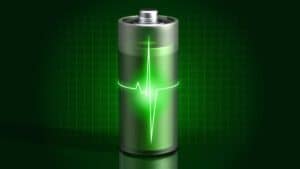
Self healing batteries have been a notable area of battery research and development in the past few years, especially as research around the dendrites and how they affect performance has also grown. Since batteries run on chemical reactions, there are certain side effects that people may not have much control over. The gradual build up of ions within the battery is one of them. There currently has not yet been a commercial breakthrough with self-healing batteries, but initial research has opened the door to the possibility of safer and longer-lasting batteries.
What are dendrites?
Lithium-ion batteries have been the most used commercial battery since the 1990s. In the past few years, researchers have discovered branch-like structures tend to form within the battery cell. Commonly referred to as dendrites, they form as lithium ions group together on the surface of the anode inside the cell. As more ions attach, the dendrites grow.
Not all dendrites cause serious damage to the battery. Researchers found that in some instances, dendrites grow evenly along the surface of the anode. In these cases, battery performance remained stable and posed little to no damage to the battery.
However, there have been cases where dendrite growth is excessive and affects the structural and chemical stability of the battery cell. The dendrites can lead to unwanted reactions between the electrolyte and lithium, and cause hotspots or electrical shorts. They have also been found to pierce through the separator of the battery, compromising the electrochemical stability of the cell. It is speculated that some battery fires and explosions are a result of dendrite growth.
Because of the formation of these dendrites, there has been hesitation to adopt lithium-metal batteries. These would have a higher energy density but at the same time their chemical makeup would further encourage dendrite growth. This is why researchers are trying to uncover more efficient and durable materials.
How would self-healing batteries work?
In theory, self-healing batteries would not only provide a safer energy storage solution by reducing the risk of electrochemical instability, they would also be longer lasting because the internal damage that is generated can be reduced. Currently, there are two types of batteries that have been tested and shown potential. These are a solid-polymer electrolyte battery, and a potassium-based battery.
Last year, researchers at the University of Illinois developed a solid-polymer electrolyte that could self-heal after damage. The electrolyte consists of network polymer. They found that the cross-linking point of the electrolyte could undergo exchange reactions and swap polymer strands. This means that the polymer becomes stiffer when heated and effectively deters dendrite growth as ions are unable to group together.
On the other hand, the potassium-based battery self-heals by reversing dendrite growth. Researchers found a way to raise the temperature inside the battery just enough to encourage the dendrites to self-heal off the anode. They applied just enough heat to encourage diffusion, smoothing the accumulated metal off the anode, but not enough to melt the potassium metal and compromise the battery.
What could this lead to in the future?
Both types of batteries are still in the early stages of development, but the technology has shown its promise in creating safer and more stable batteries.
In the case of the solid-polymer electrolyte, it would also reduce the current danger from the flammable liquid electrolyte commonly found inside lithium-ion batteries.
Batteries that are safer and can maintain efficiency with greater longevity would benefit renewable and green technologies such as grid storage, EVs, and renewable energy, propelling the world into more sustainable and long-term energy solutions.



